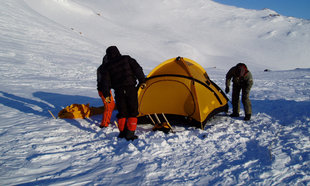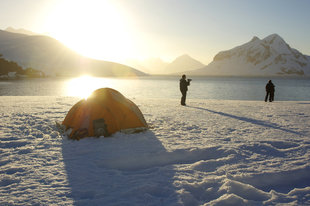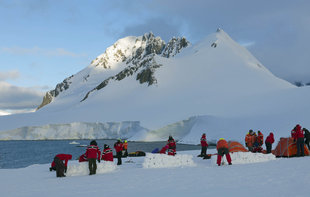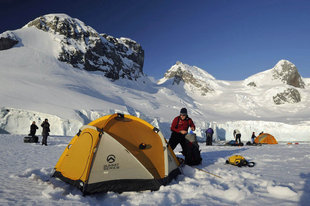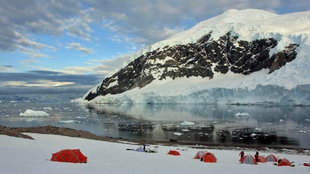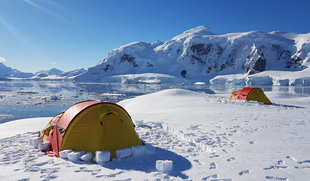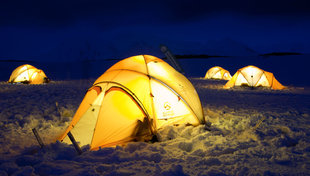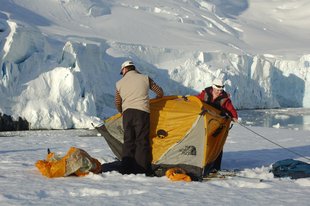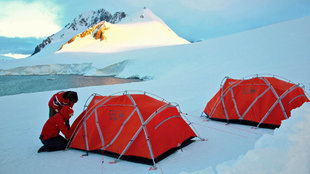Is it possible to take food?
Eating food / snacks on shore is not allowed (Antarctic Treaty/ IAATO regulations) in order to prevent the spreading of diseases and seeds of alien plant species.
Is there a possibility to go to the toilet?
Toilet visits should be avoided on land (Antarctic Treaty/ IAATO regulations). Campers are encouraged to use the toilet facilities on board, prior to the camping. A portable toilet facility will be available ashore though. All solid waste has to be returned to the ship. It is advisable that campers bring an individual "pee bottle" (e.g. wide opening plastic Nalgene bottle) for use during the night in order to avoid the use of the portable toilet.
How long do we stay ashore and where?
We offer near shore camping on the continent and/or nearby islands (depending on itinerary, weather and site regulations). Camping groups will stay up to a maximum of 10 hours ashore.
Any prior experience required?
No, everyone can participate in this activity. There are no physical requirements except giving helping hands to field staff putting up tents and cleaning the campsite. Please note that we are not camping on a camping ground, we are in Antarctica! It is likely there we will be camping on rocks, snow, mud or a frozen hard surface. Campers are encouraged to participate in erecting and preparing the camp site and also packing it all away again the next morning. All camping equipment, in particularly tent bases and mats, must be cleaned thoroughly after each use ashore. The weather can sometimes make this operation difficult.
What weather conditions are we likely to encounter?
Around the coasts of Antarctica, temperatures are generally close to freezing in the summer (December-February) months, or even slightly positive in the northern part of the Antarctic Peninsula. The temperatures in Antarctica vary between about -5 and 8 °C. Together with a strong wind these low temperatures feel like real sub-zero temperatures. This is caused by the wind-chill factor. Warm and efficient clothing (and a flexible attitude) are the best means to overcome these sometimes harsh circumstances.

